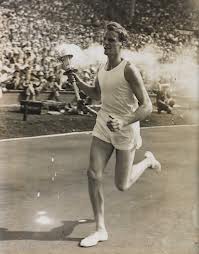A new biosensor, applied to the human skin like a temporary tattoo, can alert marathoners, competitive bikers and other “extreme” athletes that they’re about to “bonk,” or “hit the wall,” scientists are reporting.
The study, in ACS’ journal Analytical Chemistry, describes the first human tests of the sensor, which also could help soldiers and others who engage in intense exercise — and their trainers — monitor stamina and fitness.
Joseph Wang and colleagues explain that the sensor monitors lactate, a form of lactic acid released in sweat. Lactate forms when the muscles need more energy than the body can supply from the “aerobic” respiration that suffices during mild exercise. The body shifts to “anaerobic” metabolism, producing lactic acid and lactate. That helps for a while, but lactate builds up in the body, causing extreme fatigue and the infamous “bonking out,” where an athlete just cannot continue. Current methods of measuring lactate are cumbersome, require blood samples or do not give instant results. Wang’s team sought to develop a better approach.
They describe the first human tests of a lactate sensor applied to the skin like a temporary tattoo that stays on and flexes with body movements. Tests on 10 human volunteers showed that the sensor accurately measured lactate levels in sweat during exercise. “Such skin-worn metabolite biosensors could lead to useful insights into physical performance and overall physiological status, hence offering considerable promise for diverse sport, military, and biomedical applications,” say the scientists. Future research will further correlate sweat lactate levels with fitness, performance and blood lactate levels, Wang added.
The authors acknowledge funding from the National Science Foundation, the National Institutes of Health IMSD program, the UCSD von Liebig Entrepreneurism Center under the U.S. Department of Energy-sponsored Southern California Clean Energy Technology Acceleration Program and the National Natural Science Foundation of China.



The author makes a common mistake of confusing “bonking” or “hitting the wall” with “blowing up.” Bonking and its effects — the inability to continue — are not caused by an overabundance of lactate but instead the lack of sugar, the fuel that powers our activity. Bonking really can bring an athlete to a standstill and takes much longer to recover from.
In contrast, exceeding one’s lactate threshold, or blowing up, has a very different effect, forcing the athlete to slow down, not stop, until the body can process the excess lactate. Recovery from blowing up is quicker too.
That’s not to say it wouldn’t be highly beneficial to closely monitor lactate. Doing so would allow an athlete to perform at the highest possible level of performance without having to slow down and recover. This is most commonly done with heart rate monitors, but a more precise and direct way of measuring lactate would be even better.